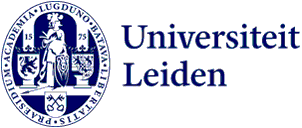
A first in the lab: a tiny network that is both strong and flexible
Daniela Kraft's group has succeeded in creating a network of microparticles that is both strong and completely flexible. This may sound simple, yet they are the first in the world to succeed in doing so. A real breakthrough in soft matter physics.
PhD candidate Julio Melio studies microscopic, flexible networks and that’s no easy job. In nature, such micro networks are found in gels, polymers or the cytoskeleton of the cells in your body. ‘These materials are pliable thanks to so-called soft modes, flexible states,’ Melio explains. ‘We don't really know how temperature affects these states. It's too complicated to study this in biological systems, so we made a network of microscopic spheres, colloids, in the lab. The simplest system is a square lattice. That can deform into a diamond-like shape, for example.’
'Eventually, I hope to be able to control the deformation of the network from the outside.'
A clever technique for flexible connections
The researcher buys silica colloids and gives them a coating of lipids. Then he creates a DNA link to connect the spheres. ‘We use two types of DNA strands that can attach to each other and place them on colloids. These can then bind to each other, but not to another colloid of the same species. The special thing about these DNA links is that the linked particles can move relative to each other. So the network is fexible.’

‘The challenge is to get the lattice perfect’
Next begins the difficult job of getting the beads into the desired structure. That's quite a challenge, Melio explains. ‘You pick up one colloid with so-called optical tweezers, a laser, and put it in contact with a second one. That's how you build the lattice one by one.’ However, the system is extremely sensitive, so with the slightest change in circumstances you get qualitatively bad spheres that stick together. ‘And then the system loses its flexibility.’
The first time, it took the PhD candidate nearly three-quarters of a year to make a perfectly square grid of five by five colloids. ‘By now, I can fortunately do it a lot faster,’ he laughs. This makes Kraft's group the first in the world to build a large microstructure in such a controlled way without losing flexibility.
Due to the selected cookie settings, we cannot show this video here.
Watch the video on the original website orPotential applications: metamaterials and microrobots
The researchers have already gained new insights that help to better understand the soft modes in microgrids. The larger the lattice is, the more likely it is to be in the square state rather than the diamond one. Larger structures also shear better: they deform more easily under shear force than smaller variants.
This is interesting for developing new metamaterials, where the properties depend on the structure. For example, how it responds to pressure or how it can fold together. But Melio especially hopes that he can find a way to control the deformation of the microgrid remotely. ‘Then you would actually have the basis for a microrobot. These are used, for example, in biomedical applications, like operations. Of course, I'm not that far yet. I'm now experimenting with making the colloids magnetic to see if they can be controlled from the outside this way. It would be really nice if I could achieve that before I finish my PhD.’
Scientific publication
Read the scientific publication in Physical Review Letters.
To the article (€)